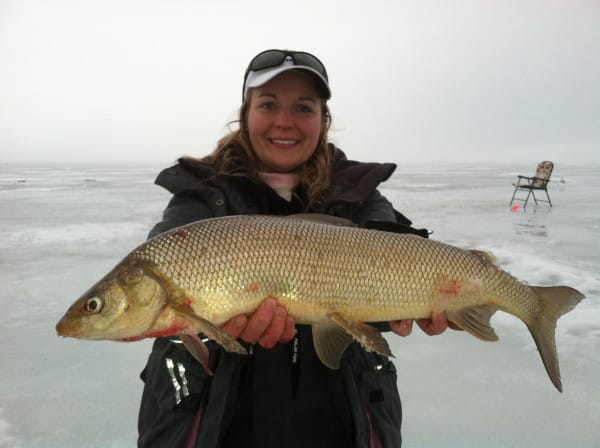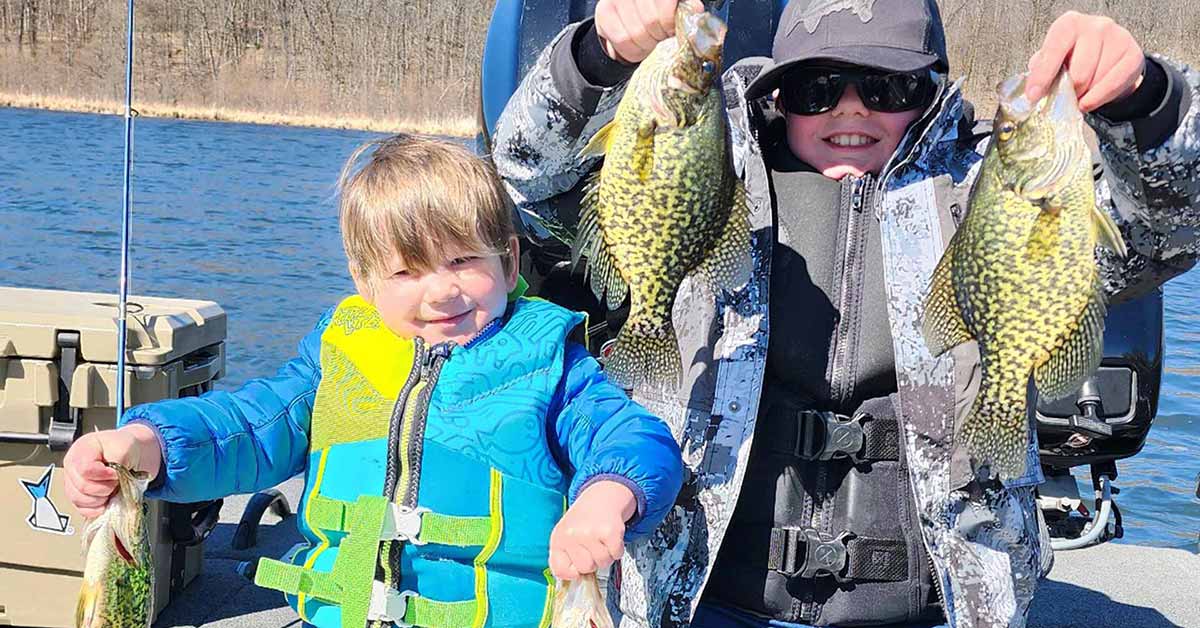by Dave Csanda
While walleyes and panfish are undoubtedly the preferred quarry of most ice jiggers, other species provide intriguing challenges–and potentially something to snack on.
Pelagic (open-water) fish of the silvery clan—namely ciscoes and whitefish—are common in deep, cold northern natural lakes. Both species remain quite active beneath the ice all winter long. Some anglers pursue them. Most do not.
As fish that may suspend nearly anywhere from the basin to the surface, ciscoes actively patrol the water column in search of tiny tidbits of food in the form of plankton, insects and perhaps even small minnows. Wherever your electronics reveal schools of suspended fish flitting about classic midlake structures like points and humps meeting the deep basin, chances are they’re ciscoes.
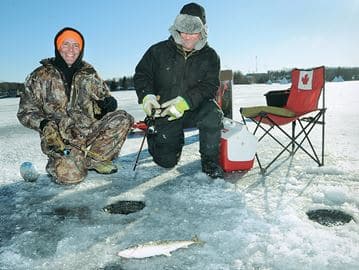
Whitefish, on the other hand, are more bottom or bottom-ish related. They’re like ghosts, ever on the move, prowling and probing the bottom for crustaceans much like schools of bonefish do across shallow saltwater flats. You’re most likely to intercept their movements around pinch points like saddles that funnel fish past or through predictable gauntlets, most likely at the 20- to 40-foot level.
While whitefish grow much larger than ciscoes—potentially 5 to 10 pounds compared to a pound or so—they still have relatively small mouths for their size. So your best bet is to think small, use light line, and let patience be your guide in letting your bait sink to the fish’s level.
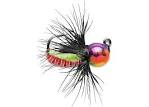


Tiny, yet relatively heavy, tungsten fly jigs are good candidates for fooling these vagabonds into biting. So are small feather or floss jigs, typically in white, or mini soft plastics tipped on 1/16-ounce jigheads. Tiny ice spoons tipped with maggots are en vogue. You might even try nicking a crappie minnow lightly below the dorsal fin and suspending it beneath a slip bobber.

For whitefish, slightly larger spoons tipped with a minnow head or maggot come into play. Or consider jigging a small, yet relatively heavy, #5 Jigging Rapala. It allows you to fish faster, hole to hole, with more aggressive jigging motions. On the pause and drop, a Jigging Rap swims in decreasing circles until finally coming to rest. Their erratic, 3-dimensional movement helps excite whitefish into biting.
In all cases, be prepared to actively trigger bites. Raise your bait to the fish’s level—and then raise it a little more, jiggling it; and then a little more again. The trick is getting finicky yet curious silver phantoms to key in on the bait, increase their interest, rise upward, get crazy, and eventually entice them to bite. Sight fishing down the hole for ciscoes, or using an underwater camera to observe fish reaction for both species, is a big plus.
Ciscoes are relatively small, so panfish rods, reels and light 2- to 4-pound monofilament line are par for the course. Whitefish are more walleye-size, so think more along the lines of 8-pound test on stiffer walleye setups. Once hooked, whiteys are surprisingly strong and fast, and don’t tire easily. You’ll need to wear them down to get them to poke their noses up and out of the hole.
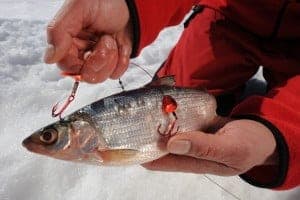
Ciscoes and small whiteys make great bait when tip-up fishing for northern pike. Smoke ‘em, and some folks claim they’re tasty. Scandinavians observe the time-honored tradition of soaking whitefish in lye, rinsing repeatedly, and reciting ancient Norse incantations to ward off evil spirits–and poisoning–when making lutefisk. Proceed at your own discretion. Ya shure, you betcha.
In the end, those fast, silvery fish lurking beneath your ice hole will give you a tussle and provide loads of fun. Whether or not you eat them, release them, or use them as bait to catch even larger fish is up to you, don’tcha know.
